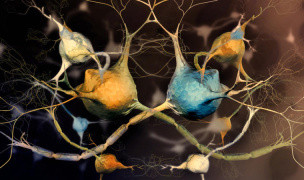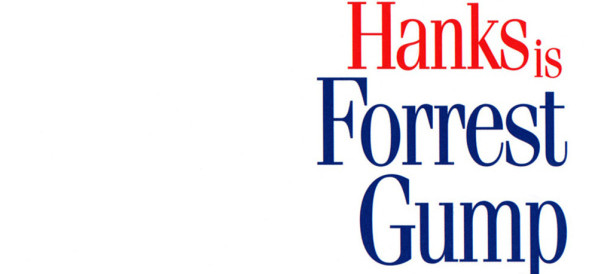 15 Terms
15 TermsHome > Terms > English (EN) > cel animation production artwork
cel animation production artwork
Any cel, drawing or painting used in any part of the making of a film. Many types of art created for the production of the film were not photographed, but instead acted as a guide for artists to follow. Some of the different types of production artwork are:
- Concept Art: Inspirational sketches or paintings used to establish the situations, color choices or mood of a particular sequence. These were rendered in a wide range of media, from pastels and graphite, to watercolor and cut paper.
- Character Models: Standardized renderings of characters, expressions, props and costumes. Character Designs would be created by concept artists or lead animators, and once they were approved, photograhic stats, called Model Sheets would be produced and distributed to the various departments to insure absolute consistency between the sketches of all of the artists working on a project. Hundreds of photostats would be produced from a single paste-up, consisting of various drawings trimmed and applied to a board. Sometimes animators would create their own model sheets, traced from their own or other artist's drawings.
- Storyboards: A series of sketches, similar to a comic strip, which outlines the action and dialogue in a scene. These drawings would be pinned up on a bulletin board and arranged, re-arranged and replaced as the story took shape. Early rough storyboard sketches are referred to as Thumbnails, while more detailed drawings would be called Finished or Final Storyboard Panels.
- Layout Drawings: A detailed pencil drawing that either indicates the fielding, the character's action, or the design of the background which acts as the scenery behind the character. There are two types of layouts: Character Layouts, which outline the character's path of movement, expressions and action within the scene; and the Background Layout, which generally consists of a line drawing of the environment in which the character exists. These layouts are used as reference by the animator, and the background painter, respectively.
- Rough Animation: Drawings The original, first generation sketch by the animators in creating the movement in a scene. Roughs can be divided into three basic types: Key Drawings, which were drawn by the principle animators themselves, Break-Downs, which were drawn by both animator and his assistant, and Inbetweens which were the work of the assistant animators alone. Generally, the animator would sketch out a key drawing for every five or six frames and leave the drawings between his keys for the assistants to fill in. Once the rough animation was approved, the drawings would be delivered to the assisting department for Clean Up. Many collectors prefer roughs to clean ups, because they are often more spontaneous and full of life, and they are more likely to be the work of a lead animator. Clean-Ups Tracings of the original animation roughs which are often more detailed and refined than the drawings which preceded them. Created by the assisting department, these sketched represent the final stage of animation before the image was transferred to the cel via hand inking or xerography. These sketches often include colored lines to indicated different ink colors, color mark-ups to tell the painters which areas to paint which colors, and notes to the ink & paint department about parts of the character that needed to be registered to other characters or background elements.
- Color Model Cels: A cel created by the Ink & Paint Department to act as an example for inkers and painters to follow. Color models may be exact duplicates of the cels appearing in the film, or may be test models, exploring various inking techniques or color palettes. Although many collectors assume that color models are less valuable than cels used under the camera, this is not always the case. Since color model cels acted as an example for the inkers and painters to follow, great care was taken to make them absolutely flawless. Cels under the camera often had flaws due to repairs or corrections quickly done in the heat of production.
- Animation Cels: The individual painting on celluloid which is photographed along with other cels and a background in a setup, creating the complete image for a single frame of film. Every cel is different, but this doesn't mean that every cel is unique. Often multiple copies of a cel were created as color models, gifts or as Inker's Tests, which were created by the inkers in their free time to refine their technique and practice their skills.
- Background Paintings: A painting or other artwork depicting the environment in wich the character operates. First, the Background Sylist made small color sketches called Key Backgrounds, which were created to establish the color scheme and mood. These keys acted as a model for the other background artists to follow. Key backgrounds were also referred to as Preliminary Backgrounds. Backgrounds which were rejected or cut from the film were called N.G. Backgrounds. Although hundreds of animation drawings and cels would be required for a scene, typically there was only one background. A setup featuring a cel and background from the same scene is often incorrectly referred to as a Key Background Setup, but a more accurate description would be a Matching Background Setup. A cel and background from the same film, but not the same scene is often referred to simply as a Background Setup.
- Part of Speech: noun
- Synonym(s):
- Blossary:
- Industry/Domain: Entertainment
- Category: Video
- Company: Tektronix
- Product:
- Acronym-Abbreviation:
Other Languages:
Member comments
Terms in the News
Billy Morgan
Sports; Snowboarding
The British snowboarder Billy Morgan has landed the sport’s first ever 1800 quadruple cork. The rider, who represented Great Britain in the 2014 Winter Olympics in Sochi, was in Livigno, Italy, when he achieved the man-oeuvre. It involves flipping four times, while body also spins with five complete rotations on a sideways or downward-facing axis. The trick ...
Marzieh Afkham
Broadcasting & receiving; News
Marzieh Afkham, who is the country’s first foreign ministry spokeswoman, will head a mission in east Asia, the state news agency reported. It is not clear to which country she will be posted as her appointment has yet to be announced officially. Afkham will only be the second female ambassador Iran has had. Under the last shah’s rule, Mehrangiz Dolatshahi, a ...
Weekly Packet
Language; Online services; Slang; Internet
Weekly Packet or "Paquete Semanal" as it is known in Cuba is a term used by Cubans to describe the information that is gathered from the internet outside of Cuba and saved onto hard drives to be transported into Cuba itself. Weekly Packets are then sold to Cuban's without internet access, allowing them to obtain information just days - and sometimes hours - after it ...
Asian Infrastructure Investment Bank (AIIB)
Banking; Investment banking
The Asian Infrastructure Investment Bank (AIIB) is an international financial institution established to address the need in Asia for infrastructure development. According to the Asian Development Bank, Asia needs $800 billion each year for roads, ports, power plants or other infrastructure projects before 2020. Originally proposed by China in 2013, a signing ...
Spartan
Online services; Internet
Spartan is the codename given to the new Microsoft Windows 10 browser that will replace Microsoft Windows Internet Explorer. The new browser will be built from the ground up and disregard any code from the IE platform. It has a new rendering engine that is built to be compatible with how the web is written today. The name Spartan is named after the ...
Featured Terms
Forrest Gump
"Mama always said life was like a box of chocolates. You never know what you're gonna get." 1994.
Contributor
Featured blossaries
SingleWriter
0
Terms
3
Blossaries
0
Followers
Options and Corporate Finance
 15 Terms
15 Termsstanley soerianto
0
Terms
107
Blossaries
6
Followers
Nerve Cell Related Diseases
 5 Terms
5 Terms
Browers Terms By Category
- General astronomy(781)
- Astronaut(371)
- Planetary science(355)
- Moon(121)
- Comets(101)
- Mars(69)
Astronomy(1901) Terms
- Journalism(537)
- Newspaper(79)
- Investigative journalism(44)
News service(660) Terms
- Human evolution(1831)
- Evolution(562)
- General archaeology(328)
- Archaeology tools(11)
- Artifacts(8)
- Dig sites(4)
Archaeology(2749) Terms
- Railroad(457)
- Train parts(12)
- Trains(2)




